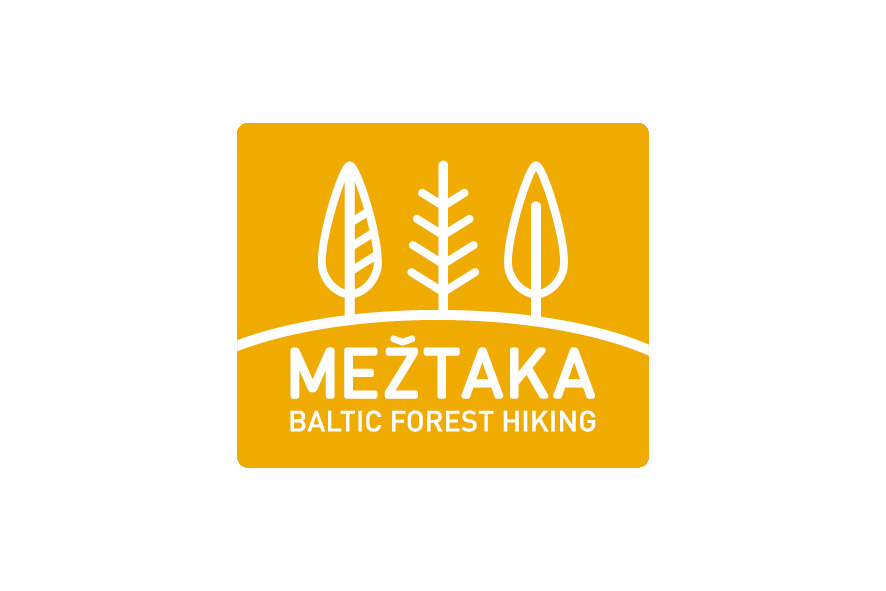Iļķenes pārceltuve (pie tagadējām Āņu mājām) nosaukumu ieguva 16. gadsimta beigās. Te Mežtakas gājējam ir iespēja atvilkt elpu un iedzert sarūpēto tēju ar sviestmaizēm. Vairākus gadsimtus šī ir bijusi nozīmīgākā Gaujas pārceltuve, jo nodrošināja ceļinieku nokļūšanu uz Straupi, Cēsīm, Valmieru, Alūksni, Tallinu, Stokholmu, Narvu, Tērbatu, Pēterburgu un citām vietām. Mūsdienās par to vairs liecina tika Johana Kristofa Broces zīmējumi. Poļu–zviedru kara laikā karaspēka vajadzībām pie Iļķenes pār Gauju tika uzcelts īpašs pontonu tilts. Vēlāk tiltu atkal nojauca, un pārceltuve turpināja darboties kā agrāk. Mākslinieka un Latvijas iedzīvotāju dzīves dokumentētāja J. K. Broces zīmētais Iļķenes prāmis sastāvēja no kopā savienotu baļķu plosta, kuru seklā ūdenī stūma uz priekšu ar kārti. Ja ūdens bija dziļāks un straujāks, prāmi pārvilka ar tauvas palīdzību, kas tika nostiprināta abos krastos. Tauva stiepās gar baļķi, kas nostiprināts uz plosta, lai neļautu upes straumei plostu aizraut. Velkot tauvu, plostu kustināja divi cilvēki. Laterna un soli uz prāmja bija ierīkoti ļaužu ērtībām, tādu citiem prāmjiem Vidzemē nemaz nebija. Rodas loģisks jautājums, cik tad bija jāmaksā Iļķenē par upei pāri tikšanu? 16. gadsimta beigās par nevācieti ar vienu zirgu cena bija 6 graši, par vācieti ar vienu zirgu — 9 graši, bet par vācieti ar diviem zirgiem — 24 graši.
Dotajā lokācijā atrodas lieliska vieta piknikam ar skatu uz izbijušo Iļķenes pārceltuvi. Blakus piknika vietai atrodas tūrisma informācijas stends ar nosaukumu “Atpūtas vieta pie Gaujas ĀŅOS”. Lai noskaidrotu slēpņa atrašnaās vietu, uz turisma plāksnes atrodi attēlotos zīmējumus un uzzini nezināmās vērtības teikumā:
"J.K. Broces zīmējumos attēlota Iļķenes pārceltuve XZYQ. gadā"
Lai uzzinātu slēpņa atrašanās vietu, ieraksti nezināmās vērtības kooridnātu rindā un atrisini vienādojumu iekavās:
N 57 5.229 E 24 28.(Y^2+Z) 6
Slēpņa apraksts: Slēpnis ir PET pudeles sagatave, tajā iekšā ir viesu grāmata un zīmulis. Lūgums slēpni nolikt atpakaļ precīzā atrašanas vietā.
Slēpnis ir daļa no slēpņu sērijas „MEŽTAKA”. Mežtaka ir Eiropas garās distances pārgājienu maršruta E11 daļa Baltijas valstīs, kas ved cauri Latvijas, Lietuvas un Igaunijas skaistākajiem mežiem un nacionālajiem parkiem. Mežtakas Ziemeļu daļas posmā no Vecrīgas līdz Igaunijas robežai, kurš izstrādāts ar Eiropas Reģionālās attīstības fonda Centrālā Baltijas jūras reģiona pārrobežu sadarbības programmas 2014.–2020. gadam finansiālu atbalstu, izvietoti 45 slēpņi. Iesakām apvienot slēpņu meklēšanu ar pastaigu pa kādu no 15 ainaviskajiem Mežtakas Ziemeļu daļas posmiem.
[ENG]
Iļķene Ferry Crossing (at the present Āņi farmstead) got its name at the end of the 16th century. Here, when walking along the Forest Trail, you have a chance to catch your breath and drink your cup of tea with some sandwiches. For several centuries, this was the most important crossing of the Gauja, since it ensured that the traveller could get to Straupe, Cēsis, Valmiera, Alūksne, Tallinn, Stockholm, Narva, Dorpatt, St. Petersburg and other places. These days, the drawings of Johan Christophe Broce were all about it. During the Polish–Swedish War, near Iļķene, a special pontoon bridge was built over the Gauja for the troops. Later, the bridge was dismantled again, and the ferry crossing continued to function as before. The ferry, drawn by the artist and Latvian resident Broce, was composed of a raft of connected logs, which in shallow water was pushed forward with a pole. If the water was deeper and faster, the ferry was pulled by a rope, which was fixed on both shores. The rope ran along a log that was fixed on the raft to prevent the river stream from carrying the raft with it. Two people were moving the raft as they pulled the rope. The lantern and steps on the ferry were designed for people's amenities, and other ferries in Vidzeme did not have such add-ons. A logical question arises, how much had to be paid for crossing the river at Iļķene? At the end of the 16th century, for a non-German with one horse, the price was 6 groats, for a German with one horse - 9 groats, and for a German with two horses - 24 groats.
In the given location you will find a nice place for a picnic with a view. Next to the picnic site is a tourist information desk called “Atpūtas vieta pie Gaujas ĀŅOS””.To find out the location of the cache with a logbook and pencil, look for two drawings on the tourism board and find the missing values in the sentence:
"J.K. Broce's drawings show the Iļķene ferry crossing back in the year XZYQ."
Enter the missing values and solve the equation to get the coordinates of the cache where you will find the guestbook:
N 57 5.229 E 24 28. (Y^2+Z) 6
Description of the geocache: The geocache is PET bottle preform container, it contains a guestbook and pencil. Please carefully close the geocache and return it to the original location.
The geocache is part of the “FOREST TRAIL” series of geocaches. The Forest Trail is a part of the European long-distance hiking route E11 in the Baltic States, which runs through the most beautiful forests and national parks of Latvia, Lithuania and Estonia. In the northern part of the Forest Trail created with the financial support of the Transborder Cooperation Programme for 2014–2020 of the European Regional Development Fund for the Central Baltic Sea Region 45 geocaches have been deployed between the Old Riga and the Estonian border. We recommend combining the geocache search with a walk through one of the 15 landscape sections of the northern part of Northern part of the Forest Trail.
